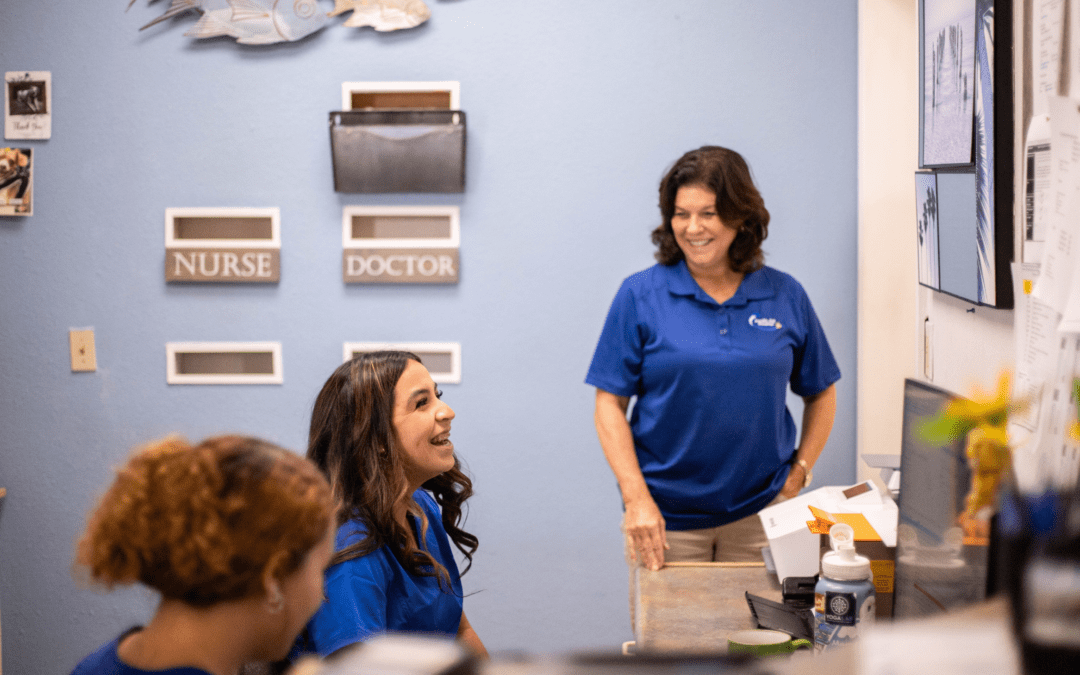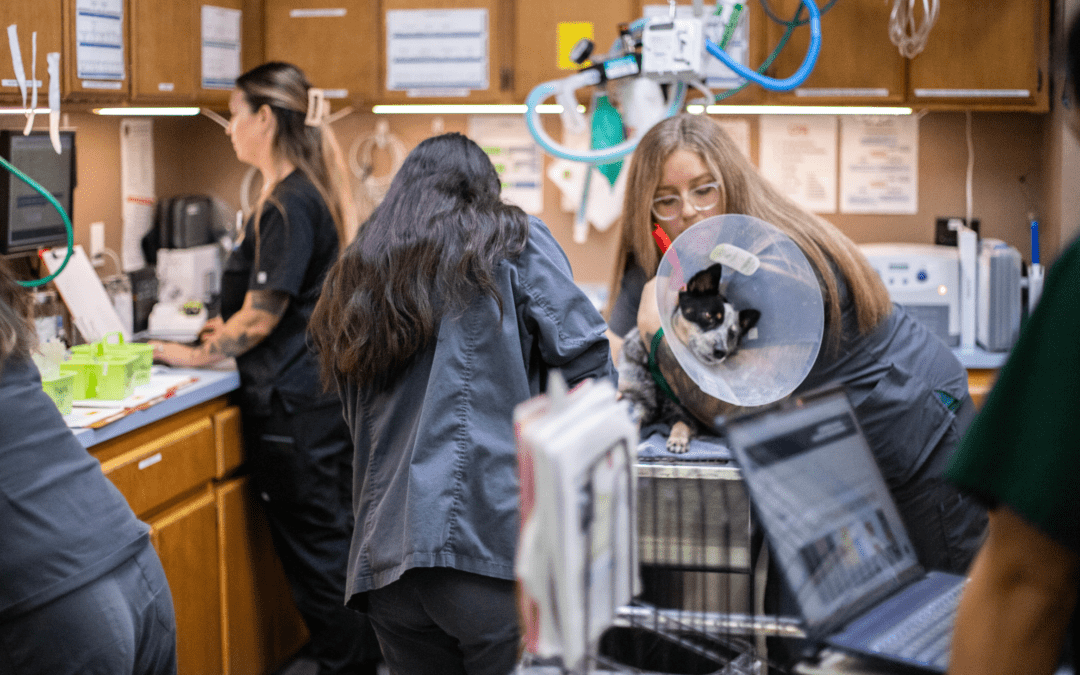You’ve done your best to help limit your staff’s involvement with toxic clients. Now—with a new year around the corner—you’re ready to lay the groundwork for a healthy client base. But what does that look like? And how do you compete with those big-box veterinary operations cropping up everywhere? We handled that vital topic in our latest Simple, Interrupted podcast to get your clinic started on the right foot for 2023. We sat down with Dr. Lauren Smith of Vetitude and Ron Sosa, the Executive Director of the Uncharted Veterinary Conference with Dr. Andy Roark. They provided helpful tips to build a CareFirst-focused practice that will keep you and your clients working in harmony.
Determining your veterinary clinic’s identity
Commoditization of care has become the name of the game in recent years. And it’s hard to compete when your clients feel “cheap and quick” is their top priority. (Or it appears that way, at any rate) You want your practice to be able to compete with Wal-Mart and PetCo’s numbers, but how are you supposed to do that?
Ron recommends that you start by taking a step back and looking at the identity of your clinic. Who are your ideal clients? And what are the most important values you want to be associated with? “Remember, you can’t be everything to everyone,” he warns. When you examine those crucial ideals, you may discover that big-box clinics AREN’T competition.
As Dr. Smith points out, small veterinary practices are known for their compassionate nature. “How do you make clients feel?” That’s a part of your identity that those big-box clinics lack. And it’s a vision you can incorporate into your marketing to help you stand apart.
Is it time to boot the pharmacy out the door?
One of the most significant aspects of competition circles around the pharmacy. Clinics simply can’t compete with the big warehouses out there. But many practices continue to maintain one, struggling with inventory while yielding a thin margin.
Ron makes the bold suggestion to let the pharmacy go. Instead, focus on providing that quality service your clients have come to expect. And Dr. Smith agrees. Clients are looking for a doctor willing to recommend medication or treatment that is best for their pet—regardless of where they need to pick it up. They’ll remain more loyal if they aren’t forced to pay hefty fees (or face the embarrassment and shame of NOT being able to pay) for clinic prescriptions.
Building the four pillars of trust in veterinary client relationships
Harvard Business Review published a piece on developing trust. And the correlation between a positive relationship revolved around consistency.
Dr. Smith agrees and points out that there are four key pillars to trust:
- Competence
- Reliability
- Integrity
- Empathy
The more your staff demonstrates these characteristics, the stronger the trust between them and your clients will be. And it starts with education.
Wellness plans for each life stage are one of Ron’s recommendations. This allows clients to hear the basic standards of care for their pet from the beginning. And your staff know what to suggest, with no deviation from doctor to doctor.
Dr. Smith agrees, suggesting a standard operating procedure built into your staff’s training. Ensure that when a client can’t afford treatment, they understand the available alternatives and the attendant risks and trade-offs. You should be specific and provide statistics where possible. “It prevents people from thinking you were trying to rip them off.”
Veterinary clinics are increasingly finding themselves compared to big-box clinics. But stepping back and determining where you can prioritize care, compassion, and trust will help set your practice apart.
Listen to the full episode here:






